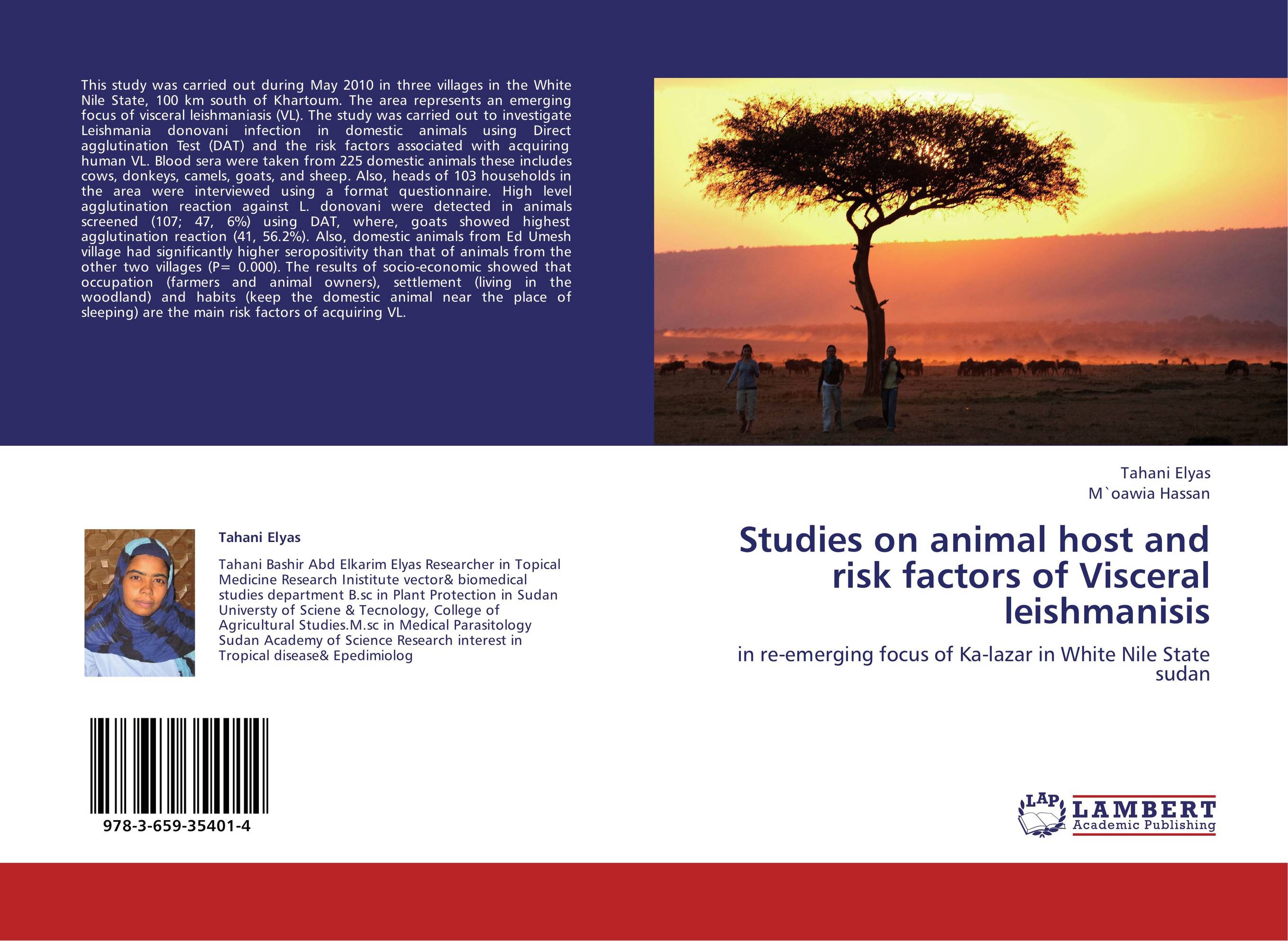| Поиск по каталогу |
|
(строгое соответствие)
|
- Профессиональная
- Научно-популярная
- Художественная
- Публицистика
- Детская
- Искусство
- Хобби, семья, дом
- Спорт
- Путеводители
- Блокноты, тетради, открытки
Studies on animal host and risk factors of Visceral leishmanisis. In re-emerging focus of Ka-lazar in White Nile State sudan

В наличии
| Местонахождение: Алматы | Состояние экземпляра: новый |

Бумажная
версия
версия
Автор: Tahani Elyas and M`oawia Hassan
ISBN: 9783659354014
Год издания: 2013
Формат книги: 60×90/16 (145×215 мм)
Количество страниц: 80
Издательство: LAP LAMBERT Academic Publishing
Цена: 30500 тг
Положить в корзину
| Способы доставки в город Алматы * комплектация (срок до отгрузки) не более 2 рабочих дней |
| Самовывоз из города Алматы (пункты самовывоза партнёра CDEK) |
| Курьерская доставка CDEK из города Москва |
| Доставка Почтой России из города Москва |
Аннотация: This study was carried out during May 2010 in three villages in the White Nile State, 100 km south of Khartoum. The area represents an emerging focus of visceral leishmaniasis (VL). The study was carried out to investigate Leishmania donovani infection in domestic animals using Direct agglutination Test (DAT) and the risk factors associated with acquiring human VL. Blood sera were taken from 225 domestic animals these includes cows, donkeys, camels, goats, and sheep. Also, heads of 103 households in the area were interviewed using a format questionnaire. High level agglutination reaction against L. donovani were detected in animals screened (107; 47, 6%) using DAT, where, goats showed highest agglutination reaction (41, 56.2%). Also, domestic animals from Ed Umesh village had significantly higher seropositivity than that of animals from the other two villages (P= 0.000). The results of socio-economic showed that occupation (farmers and animal owners), settlement (living in the woodland) and habits (keep the domestic animal near the place of sleeping) are the main risk factors of acquiring VL.
Ключевые слова: Leishamanisis, Resservior, Epedmiology White Nile Sudan



